Mayor Eric Adams’ ambitious citywide zoning reform is facing its greatest trial yet: the opinions of all 59 community boards, five borough presidents, and the general public.
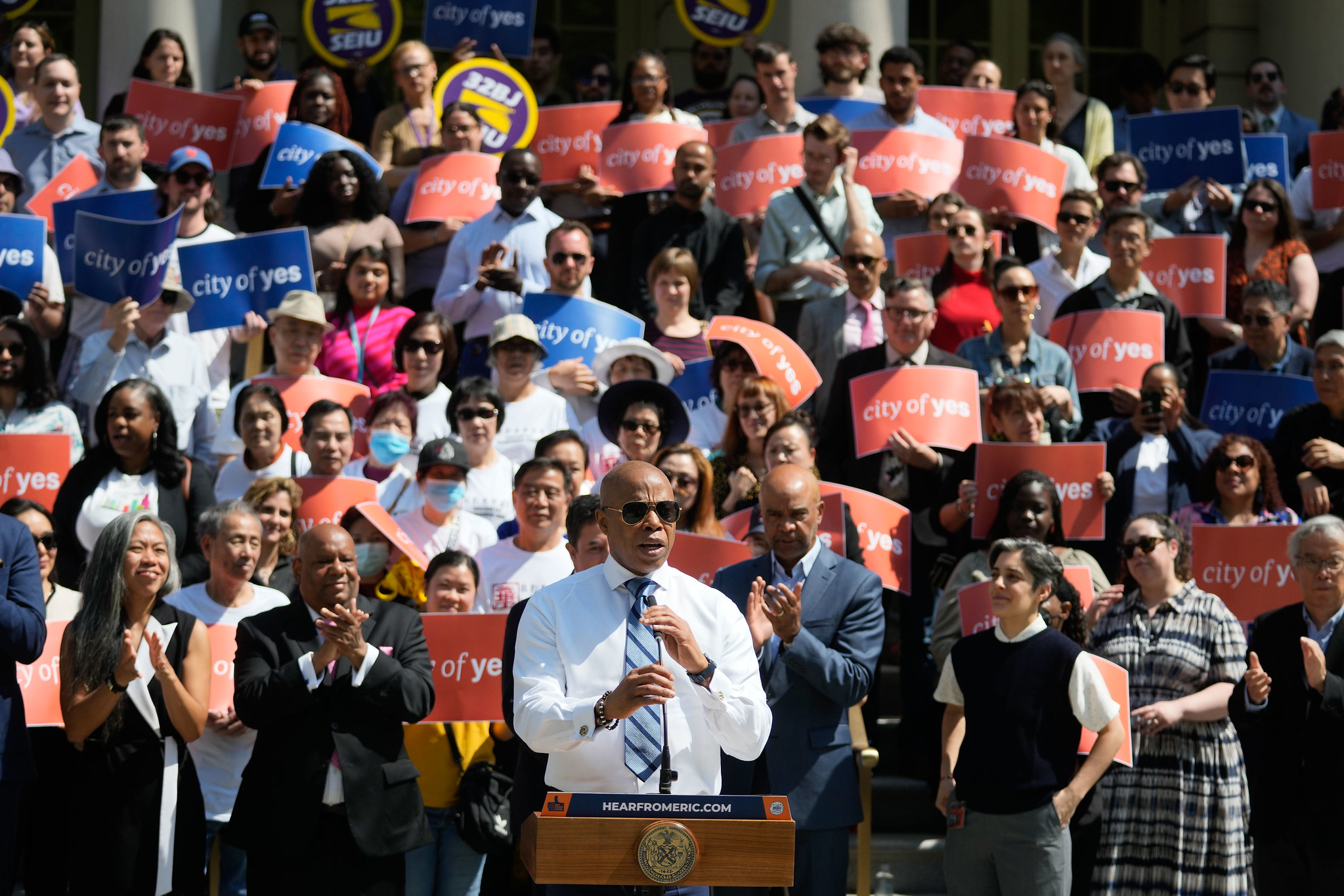
Mayor Eric Adams’ ambitious citywide zoning reform is facing its greatest trial yet: the opinions of all 59 community boards, five borough presidents, and the general public, many of whom weighed in at a recent 14-hour marathon hearing, where hundreds of impassioned New Yorkers testified in support of and against the proposal.
The City of Yes for Housing Opportunity (COYFHO), which officially entered public review at the end of April, represents the third column of Adams’ broader City of Yes initiative—which includes separate proposals related to the city’s carbon footprint and commercial businesses—and a key effort in his goal to build 500,000 new homes over the next decade.
“New Yorkers are feeling the impact of the housing crisis every day. In the face of a record-low rental vacancy rate, inaction is not an option—and this proposal meets the moment,” said Dan Garodnick, chair and director of the Department of City Planning (DCP), in a statement to City Limits before the July 10 hearing.
Garodnick, the proposal’s primary brainchild, believes the initiative will create new housing opportunities while respecting existing neighborhood character. “We take community feedback seriously as this proposal moves through public review and hope we can have a productive, fact-based conversation about how best to address this crisis,” he said in a statement to City Limits.
Comprised of eight components, COYFHO hopes to tackle the city’s housing crisis with a multipronged approach: a density bonus for developers who include affordable housing, easing residential conversions, allowing housing on top of commercial spaces, and taller buildings around public transit stations. It would greenlight Accessory Dwelling Units (ADUs) like basement apartments and garage conversions, make it easier to build on the campuses of educational and religious institutions, and relegalize shared housing.
As of this week, according to decisions published on the Dept. of City Planning’s Zoning Application Portal, the community board tally stands at two boards in favor of the plan, 26 unfavorable, 16 favorable “with conditions”―meaning the boards’ recommendations were generally supportive, but disagreed with certain aspects of the proposal―and six unfavorable “with conditions.”*
In Manhattan, two boards opted for a component-by-component response, in which they selected the individual parts of the plan they liked and disliked. Seven community board recommendations were not yet published.
The borough presidents of Manhattan, the Bronx, and Brooklyn have all voiced support for the initiative. Staten Islands’ Vito J. Fossella is opposed, while Queens’ Donovan Richards has not officially weighed in.
The citywide zoning reform has many components, all of which aim to make it easier to build new housing. While community board and borough presidents’ recommendations are only advisory under the city’s land use review process, they can influence the decisions of the City Planning Commission and City Council, whose votes are binding and expected in the coming months.
‘Housing in places where we wouldn’t otherwise get it’
In recent weeks, New Yorkers have spoken for and against COYFHO’s implementation in their respective communities, with others weighing in on possible modifications.
As one example, Brooklyn Borough President Antonio Reynoso, generally a supporter of the initiative, is seeking to modify the proposed removal of parking mandates, a rule that has long required a minimum amount of off-street parking with newly built housing in many parts of the city, which critics say drives up development costs.
Instead, Reynoso believes the plan should have a parking maximum, which would cap the total number of parking spaces developers could create in transit-heavy areas.
“We want it to be a bit more realistic,” Reynoso told City Limits. “It just really seems like something that is politically challenging right now for the mayor’s office.”
However, Reynoso would prefer other aspects of the reforms be more ambitious. He advocates for “slightly higher” density around transit zones compared to the current plan, which would permit 3- to 5-story apartment buildings in suitable locations within a half-mile radius of public transit. In his recommendations, Reynoso notes that a quarter of eligible parcels are already overbuilt to those heights, and so “no new development would be facilitated by the proposed changes” at these locations.
Likewise, another component known as “Town Center Zoning” would relegalize residential units above commercial businesses. Reynoso recommends increasing the potential housing capacity to allow for taller buildings and increased Floor Area Ratio (FAR) than what’s currently proposed.
His approval is also contingent on the inclusion of the ADU provision, which would allow owners leeway to add cottages or convert garages into housing on their properties. “It’s either stay the same or go harder, stronger on the recommendations,” Reynoso said.
Rachel Fee, the executive director of the New York Housing Conference, also highlighted the importance of the transit-oriented development zones, calling them a “critical” aspect of the proposal.
“Where we have subway stations, we think that’s the perfect place to add more density,” said Fee. “When you add more multifamily typology in predominantly single-family neighborhoods, you do increase affordable options, even if there’s not affordable requirements.”
Another element that has been hotly debated is the Universal Affordability Preference (UAP). The benefit would allow developers to build an additional 20 percent more housing, so long as the rental units are permanently affordable for families earning an average of 60 percent of the Area Median Income (AMI), about $76,260 for a family of three. (It should be noted, however, that some of the apartments could be set aside for lower or higher AMI values, so long as the average works out to 60 percent).
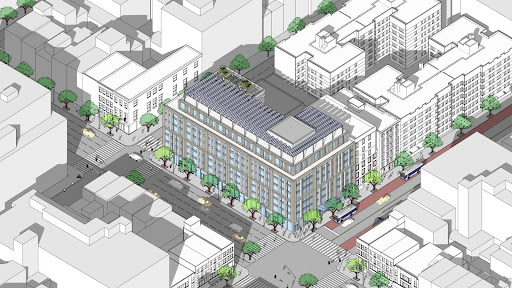

Above: These before-and-after graphics illustrate how the 20 percent density bonus under the Universal Affordability Preference could add additional units to a project. (NYC Dept. of City Planning)
With the UAP, the FAR cap for affordable and supportive housing would be raised modestly to allow for more density while ensuring permanent affordability.
In its written testimony, the Real Estate Board of New York (REBNY) commended the UAP component, saying it “has the potential to be well utilized in many neighborhoods to deliver apartments.”
However, it opposed the subsequent elimination of the city’s existing Voluntary Inclusionary Housing Program (VIH), which allows for a similar density bonus, albeit with higher affordability requirements than UAP: 80 percent AMI, or $111,840 for a family of three.
Unlike UAP, however, VIH allows the additional housing to be built off-site, so long as it’s in the same community district or within a half mile of an adjacent district from the building containing the affordable units.
REBNY argued that VIH “has been an important source of funding for affordable housing and has helped produce many affordable and market-rate units.” The landlord group argued that the potential of the new program would be “counteracted” should the city eliminate VIH.
Howard Slatkin, executive director of the Citizens Housing & Planning Council and a major advocate for zoning reform, voiced his support for modifying the UAP to allow developers to use off-site options in a manner similar to the VIH, where the affordable units are not in the same building as the density bonus.
“The idea is that it lets every kind of new housing that’s being built in a neighborhood have a path to contribute to affordable housing in that neighborhood,” said Slatkin. “We don’t want to lose the ability to do that because it’s another way of adding the ability to build more affordable housing in places where we wouldn’t otherwise get it.”
The density debate
At the City Planning Commission’s public hearing earlier this month, Chair Garodnick described COYFHO as a chance to spread affordable housing development around the city more equitably. “Last year, 10 community districts created as much housing as the other 49 combined,” he told the crowd.
Each speaker was allowed three minutes to speak their mind. On a few occasions, the quorum, made up of members of the City Planning Commission, asked questions or commented on the testimonials, particularly Garodnick, who rebutted some of the criticisms.
For instance, Councilmember Joann Ariola, representing Council District 32 in Queens—which includes lower-density neighborhoods like Ozone Park and Howard Beach—voiced her opposition.
“We’re not opposed to housing,” she said. “We’re just opposed to any type of mega-structures being built in small areas where people want to raise their children.”
In response, Garodnick pointed to the lack of development in Ariola’s district. “Do you know that the 32nd Council District is the lowest producer of affordable housing of all council districts, at 129 total units over the last 10 years?” he asked the lawmaker.
Ariola disagreed with Garodnick’s assessment, citing an abundance of affordable co-ops in her district and reiterating her constituents’ opposition to “mega-structures.” Garodnick questioned if she considered a three-story building, which town center zoning would permit, a “mega-structure.” Ariola noted that her district already has such buildings, including her own six-story residence.
“So we can agree on that,” Garodnick concluded.

Chris Janaro
City Planning Commissioner Dan Garodnick at a public hearing on the plan July 10.Another example came following testimony from Paul Graziano, an urban planning consultant who has been making the rounds at community board meetings across the city to rail against COYFHO, often preaching that it would be “apocalyptic” for low and middle-density neighborhoods. He’s even suggested that neighborhoods opposed to the plan should secede from the rest of the city.
“We have the same population, more or less, in the city of New York that we had in 1960. We have about 100,000 people more. We’ve lost an enormous number of people over the last four years, which are not being accounted for in this plan,” he said. “If you persist in going forward with this, there will be consequences to this, and we’ll find out what they are.”
Garodnick responded by thanking Graziano for his “ominous testimony,” pointing out that New York City’s population hit a record high in 2020. “Using an apples-to-apples comparison, that is a million more people than we had in 1960. Although we saw a pandemic-related decline in 2021 and 2022, we are returning to a pre-pandemic population trend in recent years,” he said.
Graziano’s claim that the proposal would end single-family zoning was “simply not true,” Garodnick argued. “In some places where it would be appropriate, like on large lots on wide streets within a half-mile [of] transit, we are proposing to allow small apartment buildings, but single-family districts would still exist in many parts of the city, even if this proposal is adopted,” he said.
In response to some of Graziano’s accusations and threats of secession, a City Planning spokesperson said, “It’s unfortunate that this suggestion has prompted fearmongering and, in some cases, outright misinformation from opponents rather than a meaningful conversation about a serious proposal to address our housing crisis.”
The affordability question
Other critics have voiced concerns that the plan doesn’t do enough to mandate affordability for new housing. Jenny Dubnau and Memo Salazar, co-chairs at the Western Queens Community Land Trust, argue that the plan gives developers too much leeway to build without requiring more deeply affordable units.
By “throwing everything to the market,” Dubnau feels that COYFHO is essentially an extensive deregulation. “That is not good policymaking because there are no political tools in place to mandate affordability,” she said.
“If you have two options, and plan ‘A’ is City of Yes as it’s currently being offered―with no subsidized package coming from the state government to create more affordable housing―or nothing, we’d take nothing,” said Salazar.
Despite the voices of opposition, the majority of speakers who showed up to the hearing testified in support of the City of Yes for Housing, holding a modest lead over those opposed. After 14 hours of testimony that ended shortly before 1 a.m., the final tally came to 203 speakers: 113 in favor and 90 against.

Chris Janaro
Supporters at a rally outside City Hall to kick of the City of Yes for Housing Opportunity earlier this year.“For the first time in a long time, we saw a majority of speakers speak in favor of more housing in every neighborhood, especially their own,” said Annemarie Gray,* executive director at Open New York, a nonprofit advocacy group pressing for more housing.
“So many of the most well-resourced parts of the city have been off limits to being part of the solution,” Gray said. “And so we need to pass the strongest version of this, and then we need to keep going. We’re correcting for decades of bad policy here.”
Another supporter who testified, Austin Celestin, is an urban planning graduate student at New York University and a member of Open New York. He was born and raised in the city but is worried about his ability to afford it in the future.
“If I were to go through anecdotes of friends and family members who have struggled as a result of our housing crisis and zoning policies, I’d probably end up taking up the rest of the public comment period,” he said at the hearing. “The beauty of this proposal is that it actually isn’t one-size-fits-all and actually caters to the different needs and capacities that each neighborhood has.”
Following his testimony, he spoke with City Limits further about why it was important for him to testify in person. He shared that, as a young adult, he’s fortunate to be living at home with his family, but that one day, he and his siblings will want to move out and start families of their own.
“I know soon I’m gonna have to move out. I want to have a family. I want to live, grow up, and raise a family [and] die in this city because I love the city,” he said. “And I know I can’t do that. I just cannot rent an apartment with the money I have saved up.”
*This story has been updated since original publication to correct a misspelling of Gray’s name, and to correct community board recommendations which were tallied incorrectly. City Limits regrets the errors.
To reach the reporter behind this story, contact Chris@citylimits.org. To reach the editor, contact Jeanmarie@citylimits.org
Want to republish this story? Find City Limits’ reprint policy here.


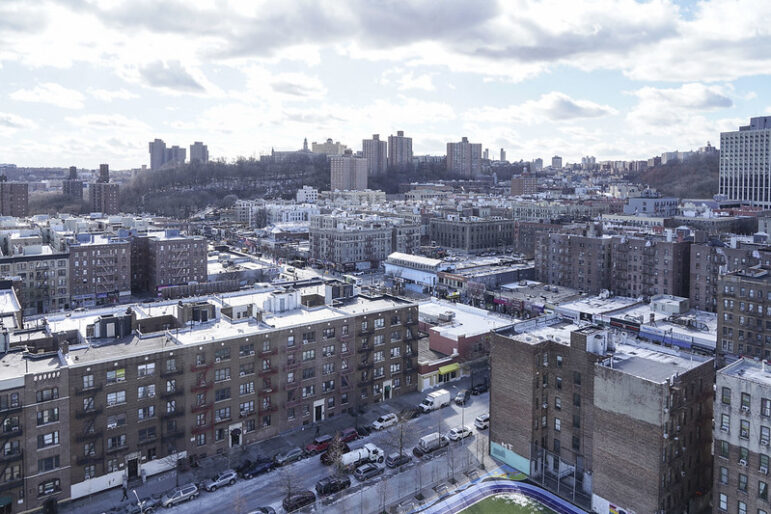
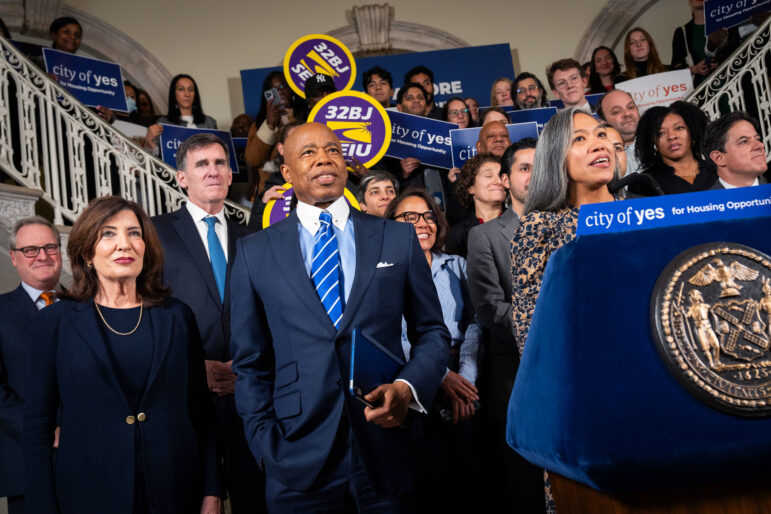
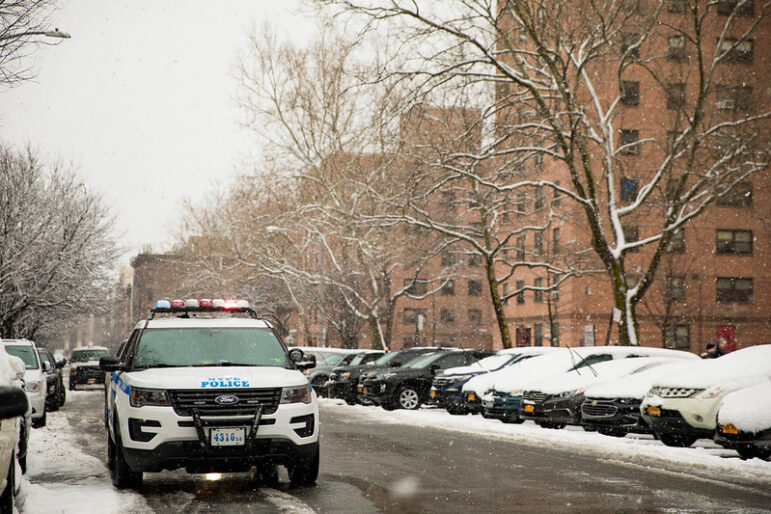
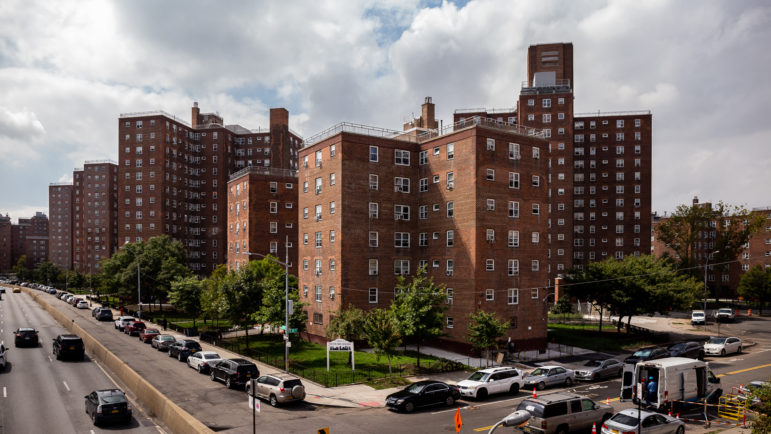



8 thoughts on “City of Yes, No, Maybe So? Public Weighs in on Mayor’s Housing Initiative”
#1 Please note that Queens Community Board 13 was a total no. It was not a conditional no.
Please refer to the resolution that passed unanimously:
https://bit.ly/NoCityofYes
I also believe Queens board 8 was a complete no as well.
But even more importantly the article did not cover the most glaring fault of City of Yes outlined in the linked Queens Community Board 13 resolution and elaborated upon in my testimony as chair of the Queens Community Board 13 Land Use Subcommittee on City of Yes and Creedmoor presented at the City Planning Commission hearing — which was not challenged by Chairman Garodnick: https://bit.ly/CB13Q_to_CPC_no_CoY.
The full text follows below:
Queens Community Board 13 held public meetings and discussions concerning the proposed City of Yes for Housing Opportunity citywide zoning text amendment, including before its Land Use Committee on June 10, 2024. The board adopted a resolution unanimously (41-0) on June 24, 2024 that recommends rejection of the provisions of City of Yes for Housing in its entirety
(https://bit.ly/NoCityofYes).
Why? Each of the provisions of City of Yes for Housing Opportunity would REMOVE traditional New York City Charter-mandated community (board), borough president and city council reviews of uses not permitted under existing zoning and land use provisions.
New York City Charter-mandated “Community Review” protects neighborhoods from adverse and unplanned and unanticipated impacts before new development can occur.
The best ways to address possible future needs require New York City to provide tools and resources to each of its community boards to identify parcels in any given community that might be appropriate, and make sense, for beneficial local development and, thereby, foster collaborations with government, community and the private and non-profit sectors to realize such beneficial results.
The “As-of-Right” features of each of the provisions of City of Yes for Housing Opportunity would weaken, if not render totally useless, the existing City Charter-mandated “Community Review” provisions.
Community Board 13 finds that any land use, zoning and or planning provisions including those found in City of Yes for Housing Opportunity that weaken rather than strengthen existing community review provisions found in the New York City Charter merit strong disapproval.
The biggest point in all this, which neither the article nor post stakeholders acknowledge, is that building taller and denser only makes the affordable housing problem worse. Groups like Open New York keep touting this “supply and demand” logic – build more, and housing will be cheaper. Sounds reasonable, right? Except that that’s not how our real estate market works. The minute you rezone an area to allow for taller and denser buildings, the profit potential on that land skyrockets. If you can rent out 200 apartments instead of 20, you can make a lot more money- so the instant that land is rezoned, the land is now selling at huge, over-inflated costs. Which means that anyone who buys the building not only can, but has to charge a high enough rent to not just recoup their investment but make a high enough profit to justify the investment.
In other words, building more just makes housing more expensive. Which means we’re not building more homes, we’re just building more investment commodities for rich people to purchase. This will not help 99% of New Yorkers trying to figure out how to afford their life here- it just helps the wealthy investors who have more land stock to purchase.
If you’re skeptical about that logic, study Vancouver- they tripled their housing stock during the same amount of time they only doubled their population. “Supply and Demand” would dictate that the cost would go down- there’s now more housing than ever, and less people competing for it- and yet, Vancouver is now one of the most expensive cities to live in. Their housing crisis is worse than ever. Why? For this exact reason- all they did was create more places for the wealthy to invest in, driving up the land value. This is happening all over the country- not just major cities- but we feel it here the most because it’s NYC- we have more people trying to invest here than anywhere else.
As it stands, City of Yes will make things worse. Until this country decides to fund housing like they used to, this is a terrible move, and housing advocates are being fooled by a lack of understanding of how the real estate market works.
The biggest hypocrite in the entire ‘City of Yes’ process is City Planning boss Dan Garodnick. Hypocrite Dan Garodnick lives in a $2.4M co-op in the ‘Upper West Side / Central Park West
Historic District’. His home will NOT be impacted by City of Yes. Yet he wants to destroy the neighborhoods of New Yorkers with homes worth a quarter of his home.
From public ACRIS records – https://a836-acris.nyc.gov/DS/DocumentSearch/DocumentDetail?doc_id=2021020301319001
Thank you for making your correction. It was disconcerting to be misrepresented because Bronx Community Board 8’s vote was UNFAVORABLE with no conditions offered.
In fact, it also promoted the Bronx Council for Environmental Quality report on the Draft Environmental Impact Statement which is fatally flawed as it does not protect the environment and is contrary to dealing with the New York City Climate Change Goals for 2030.
Thank you for correcting misinformation regarding community board votes. Bronx Community Board 8, along with many other Bronx Boards, voted City of Yes for Housing Opportunity straight down without offering any conditions. I am curious about where this misinformation originated?
While the proposal is vast in geographical area covered it’s very modest in proposed growth.
This plan allows for a little bit more housing in a lot of areas and will help, without burdening any individual community.
Get it done.
The ‘City of Yes’ is designed to destroy the quiet outer borough residential neighborhoods of NYC. Brooklyn BP Reynoso, a big ‘City of Yes’ supporter, is proud of the fact that neighborhood character means nothing to him and every other ‘City of Yes’ supporter – http://u.pc.cd/61K7
Staten Island opposed to City of Yes – http://u.pc.cd/8p5otalK
Queens opposed to City of Yes – http://u.pc.cd/gyDrtalK
Watching the public review session many of the opponents obviously have not read or do not grasp the details of this plan. Even some elected officials. The City of Yes for Housing Opportunity is not a one size fits all plan, it has many graduations dependent on the existing zoning.